
$220 SAVE $130 = 37.0% Western Digital 16.0TB Western Digital Ultrastar DC HC550 3.5-in… in Storage: Hard Drives
|

$500 SAVE $75 = 13.0% OWC 1.0TB OWC Atlas Pro SDXC V60 UHS-II Memory Card (2-Pack) in All Other Categories
|

|

|

|

|

|

|

|

|

|

|
MTF for Hartblei 40mm f/4
Related: astigmatism, Hartblei, Hartblei 40mm f/4 Super-Rotater, Hartblei Lenses, optics
This is a technical page. Skip it unless you understand MTF. Or see Making Sharp Images.
Most MTF charts plot contrast (MTF) at a distance from optical center, graphing 10/20/40 line pairs per millimeter, not so here.
These charts graph MTF from zero to 200 line pairs/mm, and there is one graph for each distance from the optical center. A distance of 21.3mm is the corner of a 35mm frame; a distance of 30.4mm is the corner of a 56mm X 24mm frame, which is what you get fully shifted 10mm in the long direction.
Note that Canon and Nikon MTF charts only go to 30 line pairs/mm. Zeiss supplies 10/20/40 line pairs/mm for most of its optics. So the charts on this page should be read out to the “40” mark only, to be (somewhat) comparable to the standard Zeiss MTF graphs.
The graphs were supplied by Hartblei, and used with permission.

Hartblei 40mm f/4
The Zeiss datasheet shows Zeiss’s official technical data.
At center, resolving power is very high, reaching out to 200 line pairs per millimeter with decent contrast.
At an offset of 10mm, strong astigmatism develops such that by the 20mm mark there is essentially no tangential resolving power for fine detail. The corner of a 35mm frame is at the 21mm mark, so this is of some concern. Stopping down to f/8 - f/11 largely overcomes this problem. However, astigmatism is associated with field curvature, so this means that while photographing flat subjects is likely to disappoint, other subjects might fare better. For “3D” images one can expect better results, depending on the distance away from the plane of focus.
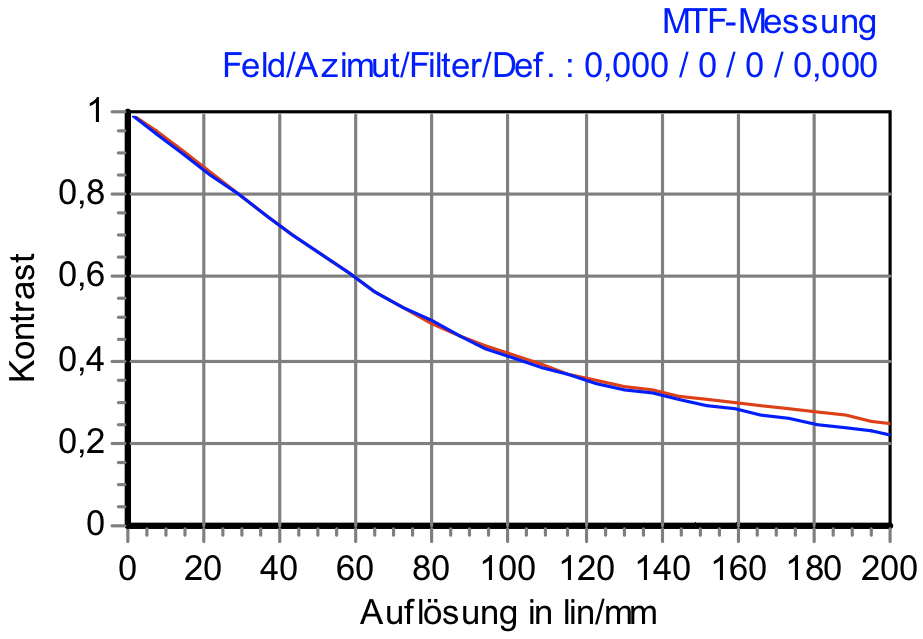
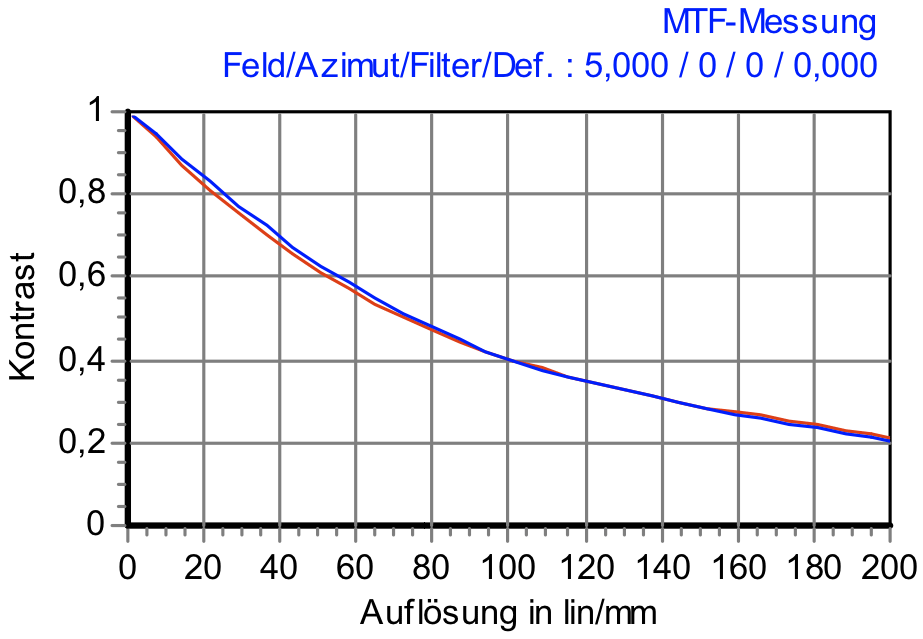
Even at an offset of 10mm, tangential resolving power is dropping off strongly.
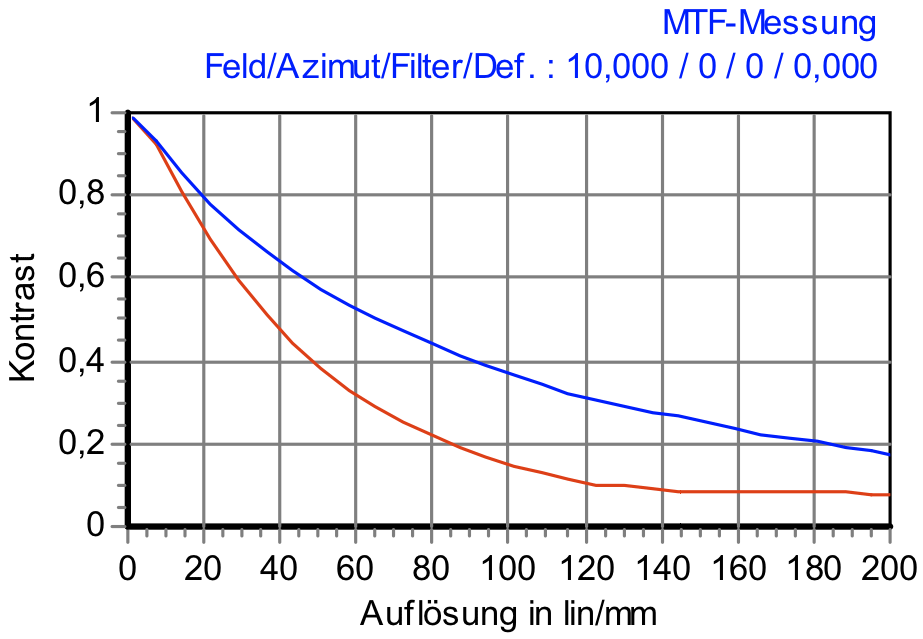
At an offset of 15mm, astigmatism is pronounced, with very poor resolving power tangentially. However, stopping down largely mitigates this issue to the 40 lp/mm mark so that real “3D” images fare very well.
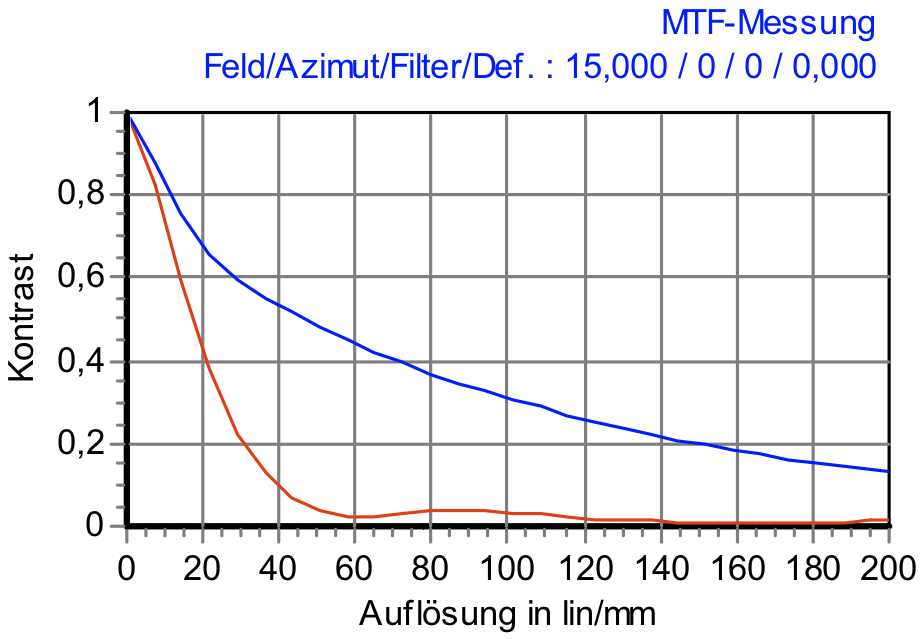
At an offset of 20mm (corner of 35mm frame) and beyond, there is very strong astigmatism, and essentially no resolving power at all (complete blur) in the tangential direction. Stopping down helps this considerably.
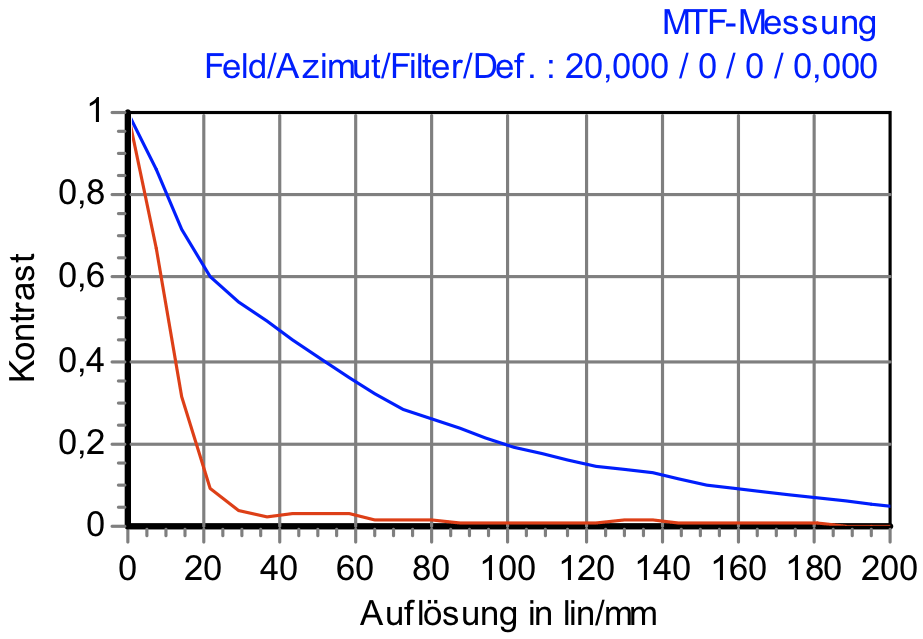
Conclusions
MTF performance examined near the edges and corners of the 35mm frame is a little disappointing. Possible explanations include field curvature, and field shots show very nice performance on “3D” images, so one can safely ignore these issues and instead be content with the superlative bokeh and color rendition.


















